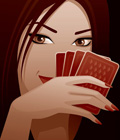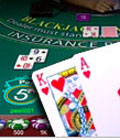麻将规则
概述
麻将是一种游戏的技能,集智能,计算和运气 -于一体,通常是由四人扮演。游戏起源于中国,并在许多国家流行,用于赌博。中文分词的字面意思是“麻一般”。在英语中,这个名字往往需要,如麻将,麻将,麻将或干脆兆焦耳的变化。
在麻将游戏片或瓦片的评分规则略有不同,根据区域有所差异。然而,在一般的游戏中,麻将的所有版本非常相似:球员竞争,建立包括套的最高点值。
麻将游戏的目的是要建立完整的套装(通常是三五成群)从13或16的瓷砖。实现这一目标的第一人算赢得了比赛,获奖完成14或17的瓷砖。
麻将比较常见的类型包括:
1、中国传统麻将 这是麻将最古老的类型,在1920年推出到美国;
2、香港麻将(粤语麻将) ,这是最常见的麻将形式,非常类似中国传统麻将;
3、日本麻将 ,在日本最常见的麻将,也可以在视频,在街机游戏中看到,日本麻将使用利一和多拉规则。
4、西方古典麻将 ,这种麻将版本的后代在20世纪20年代引进美国,使用的是赖特 - 帕特森规则。
5、美国麻将 ,麻将由全国麻将Jongg联赛标准化的形式,从传统麻将的最大的分歧,引进小丑瓷砖,查尔斯顿,以及融合了5个或更多的瓷砖,并避开周的概念和一个标准的手法。
其他变种包括(大地小丑)福建麻将,台湾麻将(每个球员将有16张牌),越南麻将(16种不同的小丑),和菲律宾麻将(窗口小丑)。
在日本,麻将街机已开发,可通过互联网连接给他人,允许以计算机或人类为对手。
麻将已经从非法赌博游戏,改变到经批准的“健康运动”。在1998年出版的一套新的规则,现在被称为国际比赛规则。该规则的原则是:不赌博 、不喝酒 、不吸烟。麻将的理事机构,现在经常举办表演赛和锦标赛。
2002年,日本麻将组委会和中国宁波市议会在麻将馆举办了第一个世界冠军麻将赛,一百名选手参加。主要来自日本和中国,也有来自欧洲和美国。从日本初音来的麦小姐成为了第一个世界麻将冠军。
2005年,在荷兰,首开欧洲麻将锦标赛,有108名球员参赛,来自日本千叶的正人赢得了一等奖。
今天麻将机的普及和人口的分类不同,因国家而异。然而,麻将文化在中国社会仍然根深蒂固。中国电影一直以麻将游戏为场景。麻将电影是一种赌博的中国电影,电影往往是在中国新年期间公布,以麻将游戏的顶瓦演奏技巧为重点的subgenre。
一个麻将牌的设置有所不同,从一个地方到另一个地方,通常144最常用的至少有136瓷砖,起源于美国或日本的集将会有更多。麻将牌包括:
圈套装 -——命名为每个瓦为一个圆圈,每个圆圈代表一个在中间的方孔铜(塘)的硬币。
竹西装 -——命名为每个瓦(1竹除外)为竹棍,每棒代表一个字符串(锁),拥有百年硬币。
字符西装 -——命名为每个瓦代表一万硬币,或一百年、一百年的硬币字符串。
风瓷砖 -——东,南,西和北。
龙瓷砖 -——红色,绿色和白色。
花牌 -——是麻将牌典型的可选组件的设置;通常包含的艺术品
当设置打麻将的板时,洗牌的麻将牌是需要打桩围在桌子前。所有球员掷三个骰子,并具有最高的总经销商。选手拿起自己的牌后,滚动骰子。
麻将计分规则涉及点。赌博时,麻将分数往往直接代表金钱,是整个活动过程的交易筹码。
积分获得与得分的标准不同,它是由一个特定的标准及相匹配的胜负手的中标条件结合,获得的点,可能会转化为每个球员的分数。
玩家通过创建一个标准的的牌局赢得麻将轮。一些变化可能还需要一些点值赢家。一个完整的麻将比赛结束后4轮。
译文:
Overview
Mahjong is a game of skill, intelligence, calculation and luck – and is usually played by four people. The game originated in China, and is used for gambling purposes in many countries. The Chinese word literally means "hemp general". In English, the name often takes on variations such as Mah Jong, Mahjongg, Majong or simply M-J.
The game pieces or tiles and scoring rules used in Mahjong differ slightly, depending on regional variations. However, the game play in general is very similar in all versions of Mahjong: players compete to build sets including the highest point value.
The object of the game of Mahjong is to build complete suits (usually of threes) from either 13 or 16 tiles. The first person to achieve this goal is said to have won the game. The winning tile completes the set of either 14 or 17 tiles.
The more common types of Mahjong include:
Chinese Traditional Mahjong – oldest type of Mahjong; introduced to America in the 1920's.
Hong Kong Mahjong (also Cantonese Mahjong) – most common form of Mahjong; very similar to the Chinese Traditional
Japanese Mahjong – most common Mahjong found in Japan, and can also be seen in video/arcade games; Japanese Mahjong uses riichi and dora rules.
Western Classical Mahjong – descendant of the version of Mahjong introduced to America in the 1920s; uses the Wright-Patterson rules.
American Mahjong – form of Mahjong standardized by the National Mah Jongg League; has the greatest divergence from traditional Mahjong, with the introduction of Joker tiles, the Charleston, as well as melds of five or more tiles, and eschewing the Chow and the notion of a standard hand.
Other variants include Fujian Mahjong (with Dadi Joker), Taiwanese Mahjong (each player would have 16 tiles), Vietnamese Mahjong (with 16 different kinds of joker), and Filipino Mahjong (with Window Joker)。
In Japan, Mahjong arcade machines have been developed which can be connected to others over the Internet, allowing play against computer or human opponents.
In the interest of changing Mahjong from an illegal gambling game to an approved 'healthy sport', a new set of rules were published in 1998, now referred to as International Tournament rules. The rule principles are: no gambling – no drinking – no smoking. The governing bodies of Mahjong now often host exhibition games and tournaments.
In 2002 the first World Championship in Mahjong was organized by the Mahjong Museum, the Japan Mahjong Organizing Committee and the city council of Ningbo, China. One hundred players participated, mainly from Japan and China, but also from Europe and the United States. Miss Mai Hatsune from Japan became the first world champion.
In 2005, in the Netherlands, the first Open European Mahjong Championship was held, with 108 players. The first prize was won by Masato Chiba from Japan.
The popularity and demographic classification of Mahjong players today differs from country to country. However, Mahjong culture is still deeply ingrained in the Chinese community. Chinese movies have always included scenes of mahjong games. Mahjong Movie is a subgenre of Chinese gambling films that focuses on Mahjong games and over-the-top tile-playing skills – the movies are often released during the Chinese New Year.
A set of Mahjong tiles differs from place to place, utilising at least 136 tiles usually and 144 most commonly, although sets originating from America or Japan will have more. Mahjong tiles include:
Circle suit – named as each tile consists of a number of circles; each circle represents copper (tong) coins with a square hole in the middle.
Bamboo suit – named as each tile (except the 1 Bamboo) consists of a number of bamboo sticks; each stick represents a string (suo) that holds a hundred coins.
Character suit – named as each tile represents ten thousand (wan) coins, or one hundred strings of one hundred coins.
Wind tiles – East, South, West, and North.
Dragon tiles – red, green, and white.
Flower tiles – typically optional components to a set of mahjong tiles; often contain artwork.
When setting up the board to play Mahjong, shuffling of the Mahjong tiles is needed before piling around the table. All players throw three dice and the one with the highest total would be the dealer. Players pick up their own tiles after rolling the dice.
Scoring in Mahjong involves points, and when gambling with Mahjong scores are often directly translated into sums of money. Poker chips are used in transaction throughout the playout.
Points are obtained by matching the winning hand and the winning condition with a specific set of criteria, with different criteria scoring different values. The points obtained may be translated into scores for each player.
A player wins a Mahjong round by creating a standard mahjong hand. Some variations may also require that winning hands be of some point value. A full game of Mahjong ends after 4 rounds.
相关推荐
随机专题



 您现在的位置:
您现在的位置: 
 难比登天的麻将胡牌牌型
难比登天的麻将胡牌牌型 德州扑克高手必备五大素质
德州扑克高手必备五大素质 看你斗地主到了哪个级别
看你斗地主到了哪个级别 玩游戏送手机游戏平台参与就有机会获得钢铁侠
玩游戏送手机游戏平台参与就有机会获得钢铁侠


